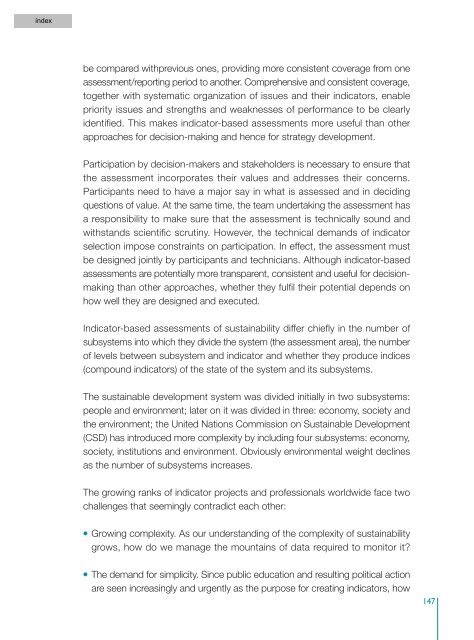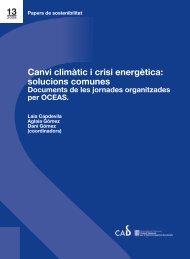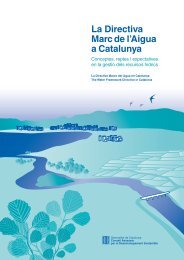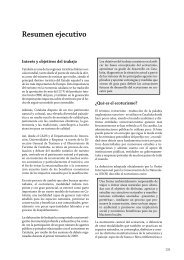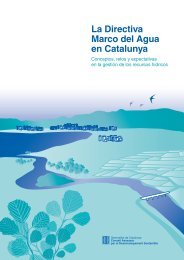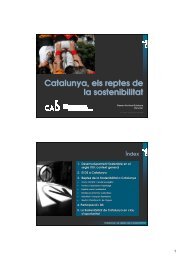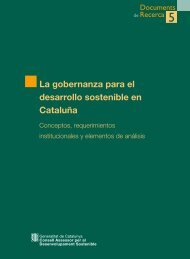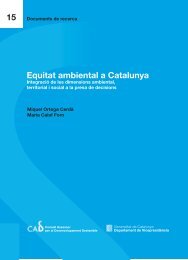Estratègies per al desenvolupament sostenible - Generalitat de ...
Estratègies per al desenvolupament sostenible - Generalitat de ...
Estratègies per al desenvolupament sostenible - Generalitat de ...
Create successful ePaper yourself
Turn your PDF publications into a flip-book with our unique Google optimized e-Paper software.
e compared withprevious ones, providing more consistent coverage from oneassessment/reporting <strong>per</strong>iod to another. Comprehensive and consistent coverage,together with systematic organization of issues and their indicators, enablepriority issues and strengths and weaknesses of <strong>per</strong>formance to be clearlyi<strong>de</strong>ntified. This makes indicator-based assessments more useful than otherapproaches for <strong>de</strong>cision-making and hence for strategy <strong>de</strong>velopment.Participation by <strong>de</strong>cision-makers and stakehol<strong>de</strong>rs is necessary to ensure thatthe assessment incorporates their v<strong>al</strong>ues and addresses their concerns.Participants need to have a major say in what is assessed and in <strong>de</strong>cidingquestions of v<strong>al</strong>ue. At the same time, the team un<strong>de</strong>rtaking the assessment hasa responsibility to make sure that the assessment is technic<strong>al</strong>ly sound andwithstands scientific scrutiny. However, the technic<strong>al</strong> <strong>de</strong>mands of indicatorselection impose constraints on participation. In effect, the assessment mustbe <strong>de</strong>signed jointly by participants and technicians. Although indicator-basedassessments are potenti<strong>al</strong>ly more transparent, consistent and useful for <strong>de</strong>cisionmakingthan other approaches, whether they fulfil their potenti<strong>al</strong> <strong>de</strong>pends onhow well they are <strong>de</strong>signed and executed.Indicator-based assessments of sustainability differ chiefly in the number ofsubsystems into which they divi<strong>de</strong> the system (the assessment area), the numberof levels between subsystem and indicator and whether they produce indices(compound indicators) of the state of the system and its subsystems.The sustainable <strong>de</strong>velopment system was divi<strong>de</strong>d initi<strong>al</strong>ly in two subsystems:people and environment; later on it was divi<strong>de</strong>d in three: economy, society andthe environment; the United Nations Commission on Sustainable Development(CSD) has introduced more complexity by including four subsystems: economy,society, institutions and environment. Obviously environment<strong>al</strong> weight <strong>de</strong>clinesas the number of subsystems increases.The growing ranks of indicator projects and profession<strong>al</strong>s worldwi<strong>de</strong> face twoch<strong>al</strong>lenges that seemingly contradict each other:Growing complexity. As our un<strong>de</strong>rstanding of the complexity of sustainabilitygrows, how do we manage the mountains of data required to monitor it?The <strong>de</strong>mand for simplicity. Since public education and resulting politic<strong>al</strong> actionare seen increasingly and urgently as the purpose for creating indicators, how147


